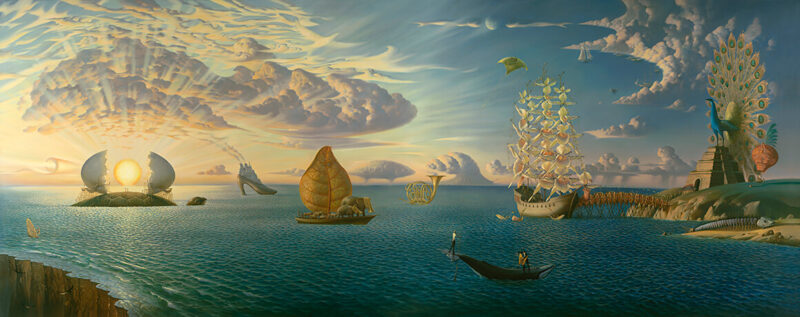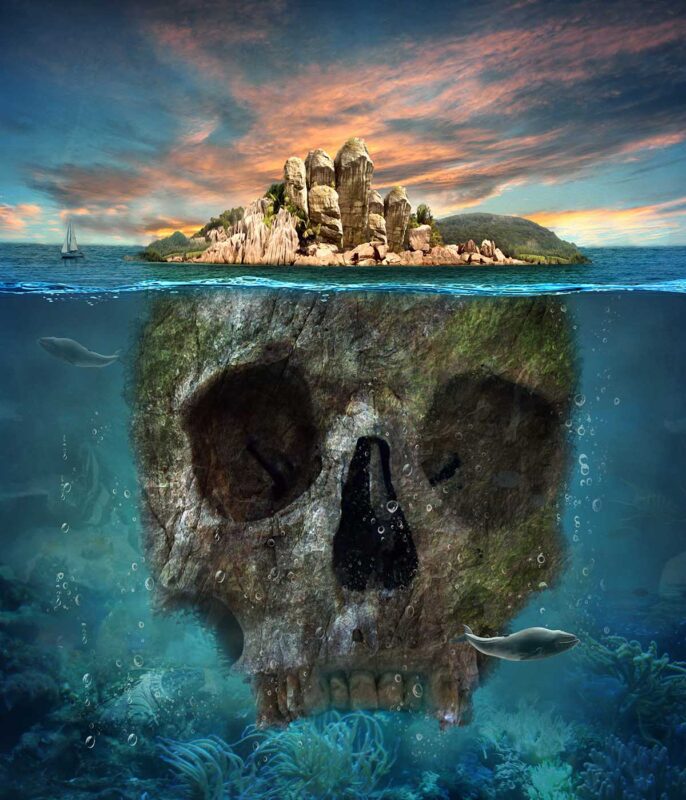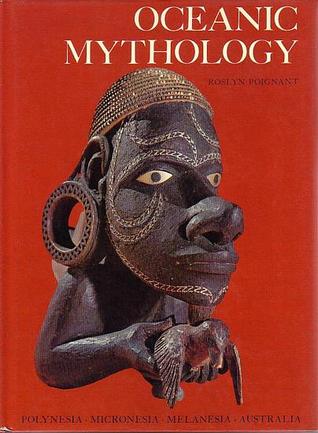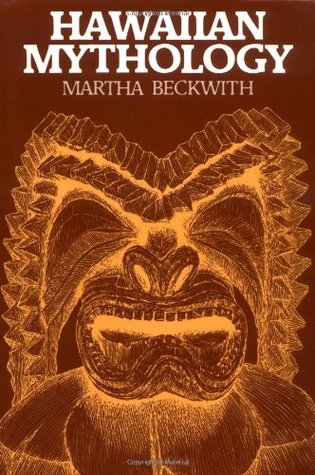OCEANIC MYTHOLOGY: GODS AND MONSTERS
By Eve Volungeviciute
With this article, we finally conclude our world tour of different mythologies and folklore. Our last stop is a pretty far-away one: the Oceanic region. While there wasn’t tons of information for me to find, I managed to gather up some interesting things to wrap this series up with. Enough of my rambling, let’s dive in!

Melanesia
The sources of Melanesian mythology are quite fragmented; however, the existence of two strata is apparent, one being called Papuan and another Melanesian. Melanesian stratum showcases its appreciation for cosmogony, cannibalistic tales and dualistic characters. What’s interesting is that the Melanesian area lacks any kind of creation myths, with the Earth always having existed as it is today.
The idea of a primeval sea is found in central Polynesia, Micronesia, and Indonesia. A part of the Admiralty Islands population believed that at some point, there was nothing in the world but sea until a great serpent pulled a reef out of the ocean, which became dry land. It was told that Manual was alone and wanted a companion, so he took his axe, went into the forest, and cut down a tree. Afterwards, he created a figure of a woman out of said tree and made it come to life. Banks Island’s version is more elaborate, with people coming back to life based on specific drumming patterns and dancing routines.
Fiji
Fijian mythology focuses on beliefs and traditions practised by the people of the island of Fiji. Degei is a serpent and a supreme god of Fiji, having also created their world. He judges newly dead souls once they pass through either Cibaciba or Drakulu caves. Some of them would be sent to paradise Burotu, while most others would be thrown into a lake where they will sink to the bottom and be either rewarded or punished.
Papua
Papuan religion involved quite a lot of animistic beliefs (thinking every object, place, or person has a distinct spiritual essence) as well as ancestor worship. The specific deities of different regions would depend on practised activities and way of living in each of them. For example, areas where farming was essential placed a great deal of importance on the weather, celebrating harvest and fertility. The fear of witchcraft and sorcery was fairly widely spread, which might be due to post-missionary Papua New Guinea combining Christianity into their belief system.

Micronesia
There is no single belief system of this region as every island had their own. As with other Oceanic regions, overtime interaction with European countries led to changes in the legends and folklore of the islands.
Nauruan
According to Naurauns, sky and earth were created by a spider called Areop-Enap. Other deities worshiped include Eigigu, a girl who was said to be the wife or the moon and Detora, a boy who became the king of the sea.
Mariana islands
Latte stone pillars are unique to this location and, according to the story, were erected by Chief Taga, who was then murdered by his daughter, her spirit imprisoned in the lone megalith at the site. Gadao is featured as a legendary chief in the southern Guam region, being the namesake of Inarajan’s Chief Gadao’s cave containing ancient cave paintings.
Kiribati
Auriaria, a red-haired giant, fell in love with Nei Tituaabine, but they didn’t have any children. When Nei Tituaabine died, her grave grew three trees – a coconut from her head, a pandanus from her heels and an almond from her navel, which made her a tree goddess. A sacred tree Kai-n-Tiku-Aba is located in Samoa while Uekera is a tree that reaches to the heavens, a ‘tree of knowledge’ in Kiribati legends.
Polynesia
Various Polynesian cultures have related, but still distinct in their own right, oral traditions – the ones considered to tell the history of ancient times and the adventures of gods. The tales use a lot of allegory, metaphor, personification and similar devices.
Hawaiian
Hawaiian religion is polytheistic, meaning they worshiped many different deities, separated into groups.; The main four gods are Kane (god of procreation), Ku (god of war, politics, farming, and fishing), Lono (god of fertility, agriculture, music, and peace) and Kanaloa (god of the underworld). There are also forty male gods or aspects of Kane, as well as at least four hundred gods and goddesses.
One Hawaiian creation myth is embodied in the Kumulipo, which is divided into two sections, of night (po) and day (ao), with the former corresponding to divinity and the latter to humankind. After the birth of the woman and the man, the man succeeds in seducing and reproducing a woman before Kane has a chance, which causes a divine lineage of the gods, younger and thus subservient to the lineage of man.
Tahiti
Tahiti is considered a variant of a more general version of Polynesian mythology, developing character for a several centuries. Unfortunately, the religion was officially suppressed in the 19th century and eventually abandoned by the natives in favour of Christianity.
Some recommended reading for people who wish to explore these topics further:

Oceanic Mythology. The Myths of Polynesia, Micronesia, Melanesia, Australia by Roslyn Poignant
Oceanic Mythology by Roland B. Dixon

Hawaiian Mythology by Martha Warren Beckwith
.
